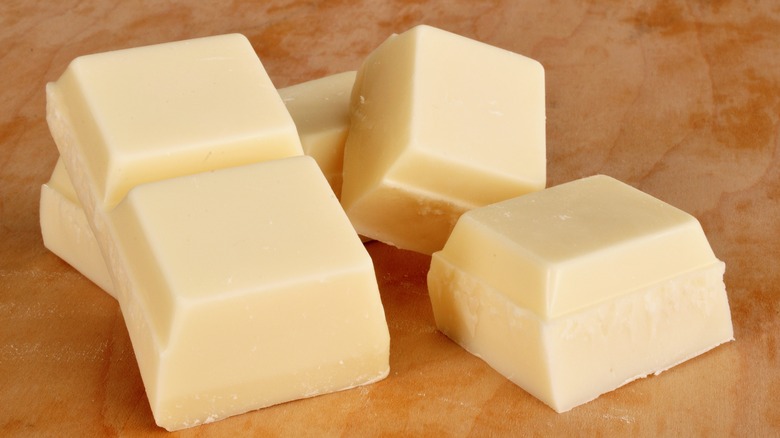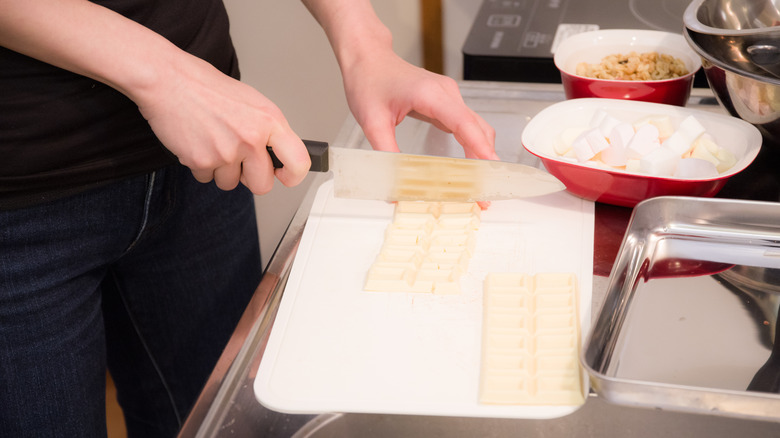How To Melt Almond Bark For Your Next Dessert
In the world of baking, chocolate reigns supreme as a famously versatile ingredient that can be mixed, sprinkled, drizzled, and everything in between. No matter the dessert, you can be sure that including chocolate in your recipe will give it that final touch of decadence your sweet tooth is searching for. However, baking with this beloved treat does come with its share of drawbacks. If you're an avid baker, frequently using chocolate in your confections can turn it into an expensive hobby, and it's notoriously hard to manipulate. To avoid making mistakes when tempering chocolate and risking it going to waste, some bakers turn to almond bark as a chocolate alternative for creating dips or toppings.
Unlike chocolate, almond bark doesn't require tempering, which achieves a glossy finish by heating chocolate, cooling it, and heating it again. It requires a lot of practice and technical know-how to get just right, and it can be easily burned since it's not oil-based like almond bark is. With that in mind, if you're making homemade food gifts for the holidays and want to make it easier on yourself, you might consider almond bark. Of course, since it isn't actually made with cocoa butter, it won't taste as divine as real chocolate does. Even so, almond bark is infinitely easier to melt down into a silky smooth mixture. It's so easy that it can be fully melted in the microwave in a matter of minutes.
Cut almond bark into pieces for a quicker microwave melt
When you've got some cake, salty snacks, or a batch of chocolate-covered strawberries that are ready to be slathered in almond bark, this chocolate alternative can be chopped for faster melting. It's best to use a plastic bowl or Tupperware container to put the pieces in, as glass bowls can come with a higher risk of scorching the almond bark. Typically, the bark should be checked on every 30 seconds and mixed around each time with a flexible spatula as the heat from the container loosens up the thicker chunks. To thin it out for even more fluidity during the decorating process, bakers will sometimes mix in a dollop of vegetable shortening.
Once you're able to stir it without seeing any lumpy bits, the almond bark is ready for drizzling or piping into molds. If you decide to improve the flavor or add coloring, be sure the extracts you add are oil-based, as water-based types will ruin the texture. If you'd like to have more control over how your almond bark melts, you can choose to melt it in a double boiler or use a regular stove top pan while employing the "low and slow" method. When it's cut into smaller pieces, the almond bark should melt quickly on a low heat setting with continuous stirring and will be ready to be removed from the heat once only a couple of lumps remain.

